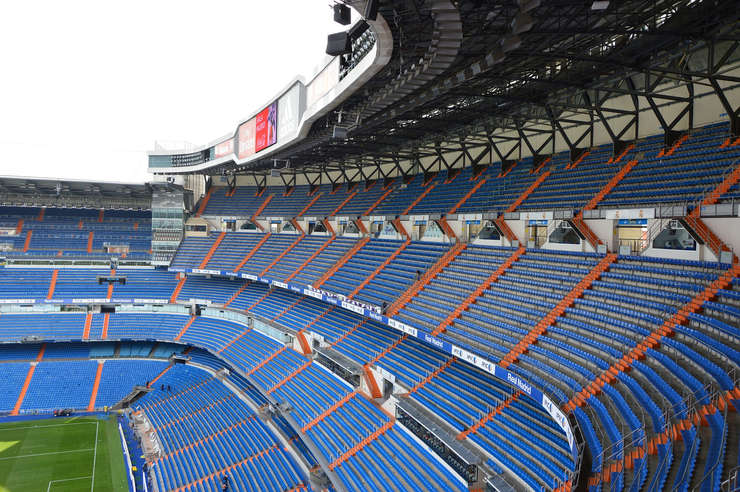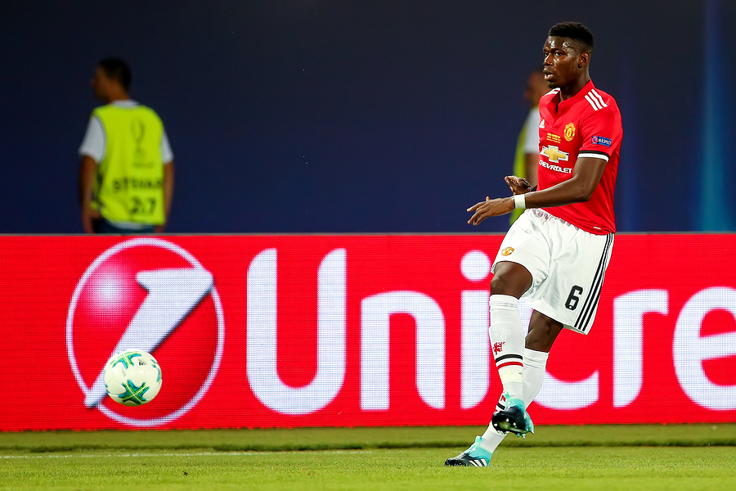Transfers today are not really complete unless there are days spent watching Sky Sports news and Jim White giddy with excitement over the millions being spent by Liverpool on the next Fernando Torres, or in Chelsea’s case thrown away on Fernando Torres (£50m). Or Andriy Shevchenko (£31m). Or Alvaro Morata (£60m)!
Neymar blew away the transfer record in 2017 when he moved from Barca to PSG for £198m and the footballing world has always revelled in the record-breaking sums continually growing. It has become an integral part of modern day football, with the eventual transfers often the culmination of months of rumours, hype and speculation.
But transfer windows and extortionate amounts of money were not always the norm. Going back to football’s amateur days, and the weekly salary of £20 that existed until 1961, football was, for a long time, not a sport of big money. However, the influence of money in the game steadily grew and this was reflected in player values. When the salary cap was scrapped in 1961 that process really leapt forward and another huge landmark came in the 1970s with the first million pound player. This piece will look at that, and the progressing milestones in record-breaking transfers.
First Million Pound Footballer

Much furore was made of the historic Trevor Francis transfer that valued a footballer for the first time at £1 million, but he was not actually the first million pound player. Sorry to throw a spanner in the works for all you trivia fans but on a global basis that honour belongs to Giuseppe Savoldi of Bologna.
The Italian striker, capped four times by Italy, moved to Napoli for two billion lira (£1.2 million at the time). Savoldi had a strong four years in a trophy laden spell in Naples. However he only managed to register a single goal for his country during his limited international career. The moniker of ‘two billion lira’ man was given to him and the media scrutiny piled on top of Savoldi. His career perhaps did not reflect the glamorous title bestowed upon him, but it is quite an achievement nonetheless.
The same could be said for Trevor Francis, the man most fans associate with the tag of being the first player to command a seven-figure transfer fee. Francis moved from Birmingham City to league champions Nottingham Forest for a fee believed to be just over £1 million, the first to reach that milestone on the British isles.
Brian Clough argued that the fee was in fact £999,999, with the Forest boss not wanting the £1m tag to add pressure onto his new forward’s shoulders. The pressure of that price tag had little impact on Francis, with him scoring Forest’s European cup winning goal in that season. His scoring rate was solid if unspectacular, but in winning 50 England caps and a boasting a more than respectable European Cup winning club career, Francis was certainly worth that million pounds.
Early Transfer Milestones: Building Up To A Million

Going back to the beginning of the 20th century, Alf Common broke the £1,000 barrier in moving from Tees-Wear rivals Sunderland to Middlesbrough. Here, Common became the first ever player to break the record transfer fee on more than one occasion. The moustachioed forward, standing an impressive 6 feet and 8 inches, helped steer Boro away from relegation from the first division, and proved to be well worth the £1,000 paid for him over his five year spell in Middlesbrough.
This record was increased once more by Syd Puddefoot in 1922, Puddefoot broke the British transfer record in spectacular fashion, breaking the world transfer record in the process. After being stationed in Scotland during the First World War, Puddefoot was brought to Falkirk for £5,000, the only time a Scottish club has ever broken the world transfer record.
The eagerness to sign the England international and Essex county cricketer meant that Falkirk fans embarked on a spot of crowdfunding, before the term even existed, so that they could capture their man. Successful in both Scotland and England, the forward went into managing latterly and managed Turkey’s Galatasaray in 1933-34. The record fee was not bettered again until David Jack, scorer of the first ever goal at Wembley Stadium, moved from Bolton Wanderers to Arsenal in 1928 for a fee believed to be £10,000.
The next time the record was broken we saw the world’s most expensive player title move away from the stronghold of the British game. Over £50,000 was spent on a footballer for the first time in the shape of Sweden’s Hans Jeppson of Atalanta, who moved to Napoli for 105 million lira. Big-spending Napoli developed a reputation for breaking records in such a manner, beginning with the man who helped Sweden to a third placed World Cup finish in 1950. Nine years later and Luis Suarez (not that Luis Suarez!) of Barcelona was sold for £152,000 to Inter Milan with great success; three league titles and two European cups won for Inter.
Italian clubs broke the record on three more consecutive occasions, culminating in Pietro Anatasi reaching the half a million mark when he moved to Juventus in 1968. This record only lasted for five years, as Barcelona invested in one of the most talented footballers to have played the game, Johan Cruyff. The Dutch legend signed for the Catalan giants in 1973 and thus began a legendary relationship between player and club. At roughly £900,000, the fee dwarfed the previous record and in doing so Cruyff so nearly earned the coveted ‘million pound player’ tag.
£3m to £5m Transfer Records: Maradona’s Record Transfers

After Cruyff, Francis and Savoldi then breached the million pound mark. World Cup winner Paolo Rossi followed, then Diego Maradona after him. Maradona would later becoming the first player to break the transfer record that he himself set.
The mercurial Argentine signed for the Catalan giants Barcelona in 1982 for £3 million after playing in the World Cup in Spain. A magician on the ball, Maradona had the capability to ignite a game instantly. Due to injuries and off-field controversies that blighted his career, Maradona’s time at Barca ended prematurely for a player of his talent. After only two seasons, he was signed for Italian sleeping giants Napoli.
The Neapolitans again broke the bank on a player, with £5 million securing Maradona’s services. Here he played the best football of his club career, winning Coppa Italias and Serie A titles in Napoli’s most successful era in their history. Maradona achieved godlike status in Naples as he wowed supporters with his incredible skill. Even to this day his image is everywhere in the city and at a time when northern Italy very much looked down its nose at the south, Diego Armando Maradona gave the people of Napoli immense pride.
Maradona’s signing reveal attracted 75,000 fans to the Stadio San Paolo, recently named after the Argentine legend following his sad death in 2020. Winning a World Cup during his time at Napoli, off-field issues again hindered him as his love affair with the club came to an end, but the world record transfer of Maradona was undoubtedly money well spent by Napoli. His time there rejuvenated both player and club and he will always, always be remembered by the city.
£6m to £13m Transfer Records: Gullit to Ronaldo

With Italian club football at the height of its worldwide popularity, records continued to tumble as Serie A was the most attractive proposition for foreign footballers. With Italian football having a limit on foreign players in these pre-EU days, their capture became all the more contested. Ruud Gullit signed for Arrigo Sacchi’s all-conquering AC Milan side in 1987 for £6 million, more than repaying his fee as I Rossoneri won multiple domestic titles, as well as the European Cup in 1989 and 1990.
Unhappy with this Milanese dominance, Turin giants Juventus paid big money for two Italian national players, Gianluca Vialli (£12.5m in 1992) and Roberto Baggio (£8m in 1990) from Sampdoria and Fiorentina respectively.
However, in between those records we saw the first eight-figure player, with £10 million being spent on Frenchman Jean-Pierre Papin. He moved from Marseille to AC Milan in 1992, having won the Ballon d’Or in 1991. His performances did not match the fee however during an injury plagued tenure at the Rossoneri.
Next up we saw young sensation Ronaldo move from PSV Eindhoven when he was signed by Bobby Robson’s Barcelona in 1996. Only spending a season there, the Brazilian striker was prolific with 34 league goals in 37 games, helping Barca achieve an unlikely trophy haul during a rebuilding phase for the club.
£13m to £40m+ Transfer Records: Shearer to Zidane

Again, English football took centre stage as the big signing of Alan Shearer to his boyhood club Newcastle brought worldwide attention. Signed for £15 million, the in-form Blackburn striker could have gone to any club of his choosing but signed for the Geordies and became a legend of the club, with a statue of him erected outside St. James’ Park.
The following year in 1997, Ronaldo shattered another world record by leaving Barcelona to join Inter Milan after one year for £19.5 million. Ronaldo was a huge success in Milan, but a high price tag does not guarantee success. Another Brazilian, Denilson, moved to Real Betis for a new high of £21 million, but failed to deliver.
Christian Vieri and Hernan Crespo both sold for substantial fees, but the beginning of the 21st century saw Real Madrid begin to flex their financial muscle as they broke the transfer record as a club a staggering five consecutive times. This was the era of the Galacticos and began with Luis Figo, controversial given the player was joining from fierce rivals Barcelona in 2000. £37 million was enough to pry away the Catalans’ prize asset and Figo began to repay the faith in him with mesmeric performances.
Not happy with just one of the world’s best creative players, Los Blancos added another. A year later, Zinedine Zidane joined Figo as The Galacticos began to take shape. Signed for over £45 million, Zidane performed masterfully in midfield, winning numerous titles as both player and latterly manager, cementing his status as one of the game’s all-time greats.
£50m to £100m Transfer Records: Kaka to Pogba

With the original Galacticos moving on or retiring, Real Madrid embarked on finding a new generation of megastar, spending big on AC Milan’s Kaka. The Brazilian playmaker
Cristiano Ronaldo also went to Real Madrid in a move that was an unequivocal success. It was also outstanding value for money despite the eyewatering £80 million spent on the Manchester United winger
Now Real’s top ever goalscorer, winning multiple Champions Leagues and Spanish titles, Cristiano Ronaldo has earned huge plaudits and is undoubtedly one of the best five players of all time. We’ll leave the argument over his exact place in the pecking order for another time!
In contrast to Ronaldo’s almost perfect career at Madrid, the next to break the record was Gareth Bale, who certainly had his ups but also his downs. In 2013 he went from Spurs to Real Madrid and also won many a domestic and European honour, but there is apathy and ambivalence among the Madrid fans when it comes to the Welshman. Perhaps the pressure of comparison to the Portuguese legend Ronaldo meant that Bale was always facing an uphill struggle to justify his price tag of £86 million.
The next player on this list has had similar problems. At £89 million the return of Paul Pogba to Man United was supposed to usher in a new era of dominance at Old Trafford. This has not transpired and again has shown how the excessive transfer fees paid often do dictate expectations about a player’s performance and heap huge pressure on them.
Breaking The Bank: Top Transfer Ever

Much as £89m seems like a huge sum, we have come a long, long way in a relatively short time since Pogba’s 2016 transfer record. Paris Saint Germain have had a lot to do with that and they, like the record, have also come a long way in recent years.
Massive financial backing from their Qatari owners has allowed them to attract some of the most sought after talent in the world. This is evidenced by their audacious, and ultimately successful pursuit of Barcelona’s heir apparent to Lionel Messi, Neymar.
This staggeringly high fee blew away all previous records as just shy of £200 million was spent on the Brazilian golden boy. Lawsuits and contractual discussion raged over the complexity of this unprecedented multi million pound deal but there can be no doubting Neymar’s commercial appeal.
Joining a star-studded team, PSG have won French domestic competitions aplenty and repeatedly turned Ligue 1 into a stroll. However, their holy grail of European success still eludes them. The Parisians have money to burn and it would not be surprising if they were the next to break the transfer record. The French side also spent £163m on speedster Kylian Mbappé in 2018 but at the time of writing it is Neymar’s £198m move in 2017 that remains the most expensive transfer in history.
Mbappé may well be the next man to break the record if one of the Spanish giants comes calling, or perhaps Man City will splash the cash on him, or the likes of Dortmund’s Erling Braut Haaland. Quite when Neymar’s record will go we cannot say, with the financial climate in football having cooled considerably due to the events of 2020 and beyond. But we can, of course, say that it will go at some stage and one day we may well be talking about the first billion pound player!

